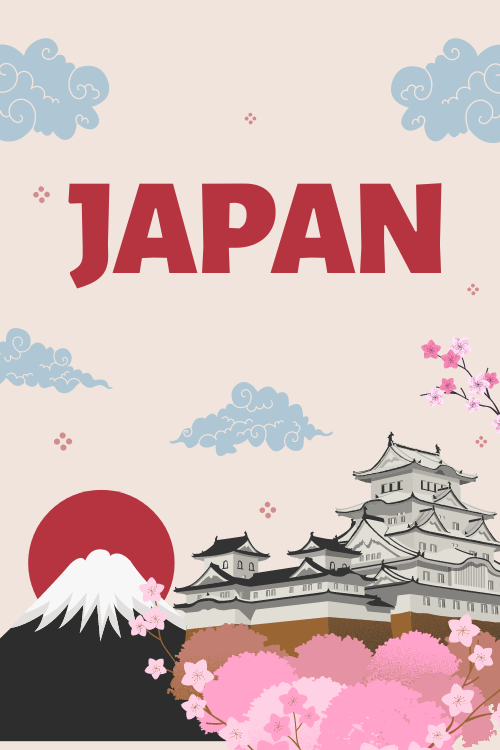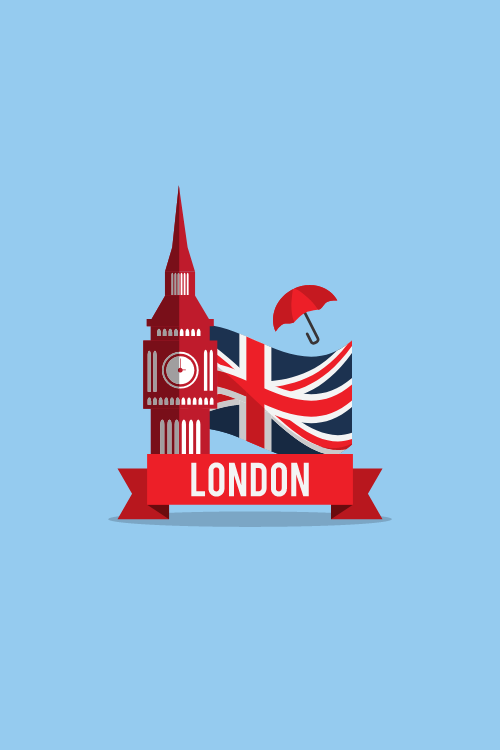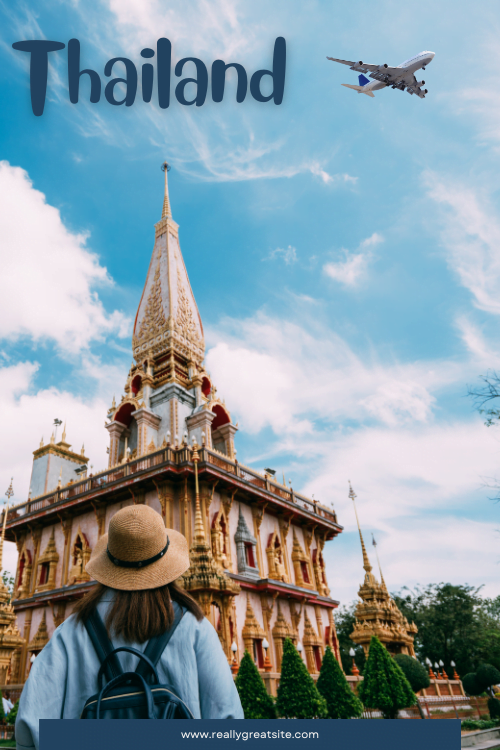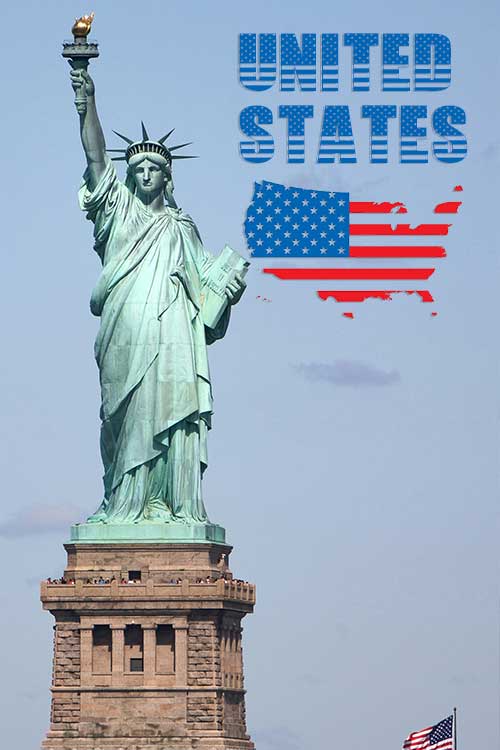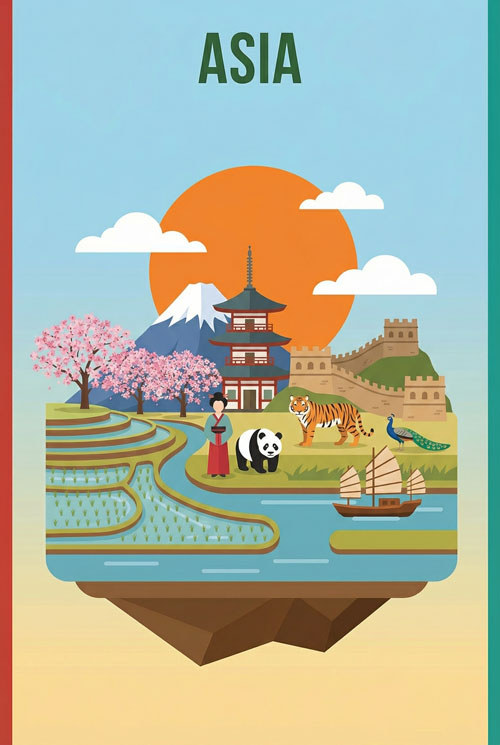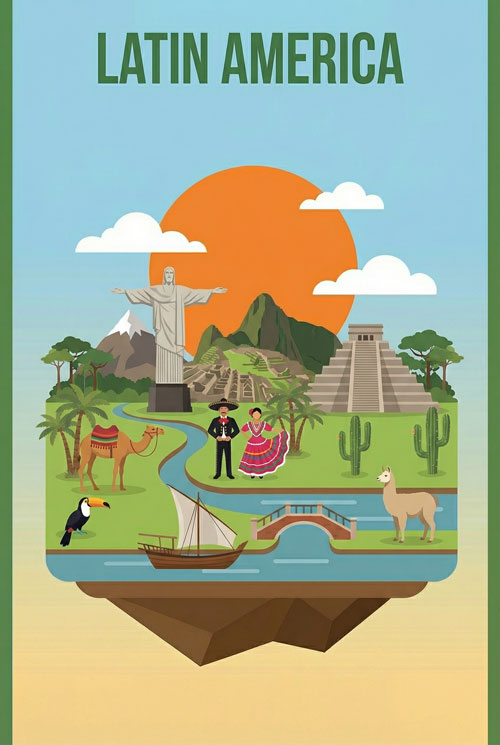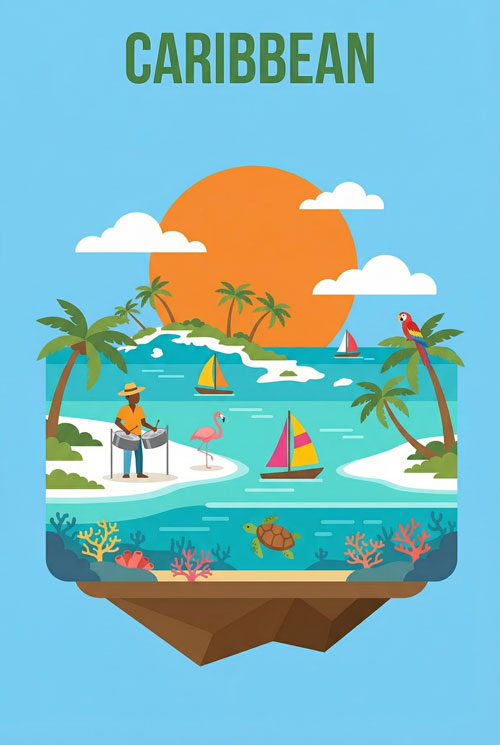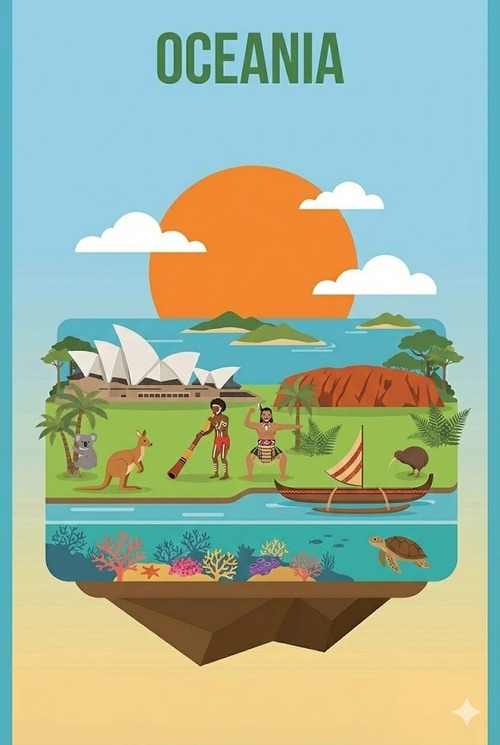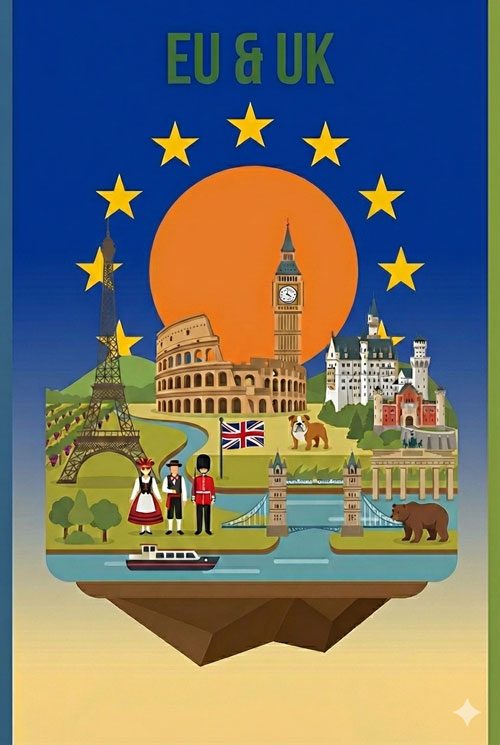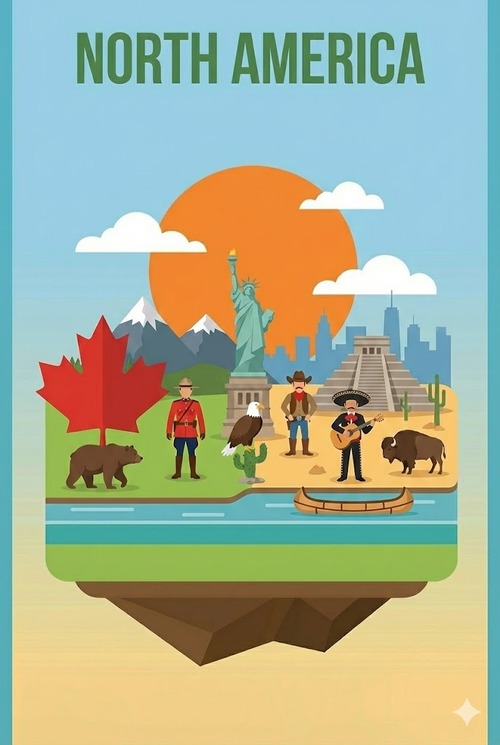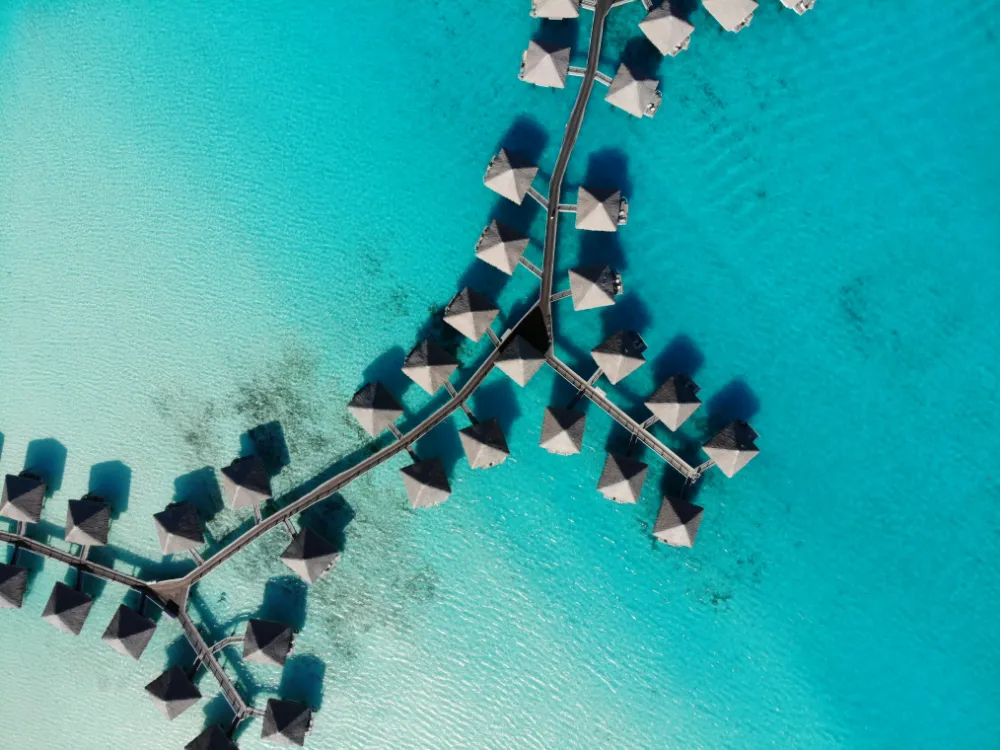Best Time To Visit
Best Time to Visit Bora Bora?
Bora Bora, an icon of tropical paradise nestled in French Polynesia, consistently ranks among the world’s most desirable travel destinations. Its legendary turquoise lagoon, luxurious overwater bungalows, and the dramatic silhouette of Mount Otemanu evoke images of unparalleled beauty and escape.
Planning a trip to this South Pacific jewel involves considering various factors, and chief among them is timing. While the island boasts warm temperatures year-round, making it technically appealing anytime, the specific time of visit profoundly shapes the experience.
This guide provides a comprehensive, data-driven analysis to help potential visitors determine their personal best time to travel to Bora Bora.
Understanding the difference between the distinct wet and dry seasons, fluctuating crowd levels, variable pricing, and optimal windows for specific activities like diving or whale watching is crucial.
Quick Answers: Bora Bora Timing at a Glance
- Best Overall (Weather & Activities): May – October (Dry Season)
- Best Value (Lower Prices & Fewer Crowds): Shoulder Seasons (April, November) & Low Season (Jan-Mar, excluding holidays)
- Best for Diving/Snorkeling: April – June, October – November (calm, clear waters)
- Best for Whale Watching: July – November (Humpback migration)
- Best for Cultural Festivals: July (Heiva i Bora Bora)
- Highest Crowds & Prices: June – August & Late December/Early January
- Highest Rainfall: December – March (especially January)
Understanding Bora Bora’s Climate: Wet vs. Dry Seasons
Bora Bora enjoys a tropical climate characterized by consistently warm temperatures throughout the year, typically hovering between the mid-70s and high 80s Fahrenheit (approximately 24-31°C).
This year-round warmth is a major draw, yet it belies significant seasonal variations primarily driven by rainfall and humidity, dividing the year into two main seasons: the dry season and the wet season. Understanding the nuances of each is fundamental to planning a successful trip.
The Dry Season (May – October): “Peak Perfection”
Occurring during the Southern Hemisphere’s winter months, the dry season from May to October is widely regarded as the period offering the most idyllic weather conditions in Bora Bora.
This timeframe is characterized by abundant sunshine, clear blue skies, lower humidity levels, and pleasant daytime temperatures often reaching the low 80s°F (around 28°C).
Refreshing trade winds, known locally as the mara’amu, often blow during this period, particularly from June through August, helping to moderate the heat and reduce humidity further, creating comfortable conditions for outdoor pursuits.
The advantages of visiting during the dry season are clear: the near-perfect weather is ideal for maximizing time spent outdoors.
Sunbathing on pristine beaches, engaging in water sports like snorkeling, diving, sailing, and Jet Skiing in the calm, clear lagoon, and hiking the island’s trails are all highly favored activities during these months. Tour operators and excursions are fully operational, and the visibility within the lagoon is typically at its peak.
However, this period of “peak perfection” coincides with the high tourist season. The desirable weather attracts the largest number of visitors, leading to significantly more crowded beaches, resorts, and popular attractions.
This influx is particularly pronounced during July and August, which align with summer holidays in Europe and North America. Consequently, prices for flights and accommodations reach their peak, often requiring bookings to be made months, if not a year, in advance to secure preferred options.
Travelers seeking tranquility or traveling on a tighter budget may find the high season less appealing despite the excellent weather.
The Wet Season (November – April): “Lush Tropics & Lower Prices”
Contrasting with the dry season, the wet season spans from November through April, coinciding with the Southern Hemisphere’s summer.
This period brings higher humidity levels and a greater likelihood of rainfall. Temperatures are generally warmer, often reaching the high 80s°F (around 30-31°C). Rainfall often manifests as short, intense tropical downpours, frequently followed by returning sunshine, though longer periods of overcast skies or rain can occur.
January consistently ranks as the rainiest month. It’s also important to note that the official cyclone season for the region runs from November to April, with the highest risk typically concentrated between January and March. While direct hurricane hits on Bora Bora are historically infrequent, the possibility exists, and associated weather systems can bring extended periods of wind and rain.
Despite the weather challenges, the wet season offers distinct advantages. The most significant is the reduction in tourist numbers compared to the dry season, leading to a quieter, more relaxed atmosphere across the island. An important exception is the festive period around Christmas and New Year’s, which sees a temporary surge in visitors and prices. Outside of this holiday spike, travelers visiting during the wet season, particularly from January through March, can benefit from significantly lower prices for accommodations and potentially flights, making a luxury destination like Bora Bora more accessible.
Furthermore, the increased rainfall results in exceptionally lush and vibrant green landscapes, with tropical flowers and fruits in abundance. The lagoon waters remain invitingly warm for swimming. Rainy afternoons can be opportunities for unique indoor experiences, such as taking a Polynesian cooking class, enjoying spa treatments, or learning traditional crafts like flower crown weaving. When the rain breaks, visitors are often rewarded with stunning, dramatic rainbow views, particularly against the backdrop of Mount Otemanu. Some travelers specifically appreciate the quieter, “off-season” ambiance.
However, the potential for rain to disrupt outdoor activities is a primary drawback. Higher humidity levels can feel uncomfortable for some visitors, and water visibility for snorkeling and diving may be reduced due to rain runoff and potentially rougher surface conditions. Mosquitoes can also be more prevalent during the wetter months.
The Shoulder Seasons (April & November): “The Best of Both Worlds?”
Positioned between the distinct wet and dry periods, the months of April and November constitute the shoulder seasons, offering a potentially appealing blend of the characteristics of both. April marks the transition towards the drier months, while November leads into the wetter period. Consequently, the weather during these months is generally pleasant but can be variable. Expect a mix of sunny days and occasional rain showers, with humidity levels typically lower than the peak wet season but potentially higher than the core dry season.
The primary appeal of the shoulder seasons lies in the balance they strike. Crowd levels are noticeably lower than during the peak summer months, offering a more serene experience. Prices for accommodations and flights are generally more moderate than in the high season, presenting good value for travelers.
Furthermore, these months are often highlighted as excellent times for underwater activities.
The transition periods frequently bring calmer seas and reduced winds compared to the peak dry season, resulting in excellent water clarity and visibility for scuba diving and snorkeling.
Marine life, including sharks, manta rays, and barracudas, is readily observable. November also hosts the Hawaiki Nui Va’a, a major outrigger canoe race and significant cultural event, offering a unique spectacle for visitors.
Many travel experts specifically recommend these shoulder months as offering an optimal combination of factors.
The main consideration for shoulder season travel is the less predictable weather compared to the peak dry season; some rainfall is still possible and should be anticipated.
Prices might also begin to increase towards the end of April as the high season approaches or start to decrease more significantly later in November.
The distinction between high, low, and shoulder seasons provides a useful framework, but recognizing the variations within these periods is key for precise planning. For instance, the low season’s affordability and low crowd levels are interrupted by the late December/early January holiday spike.
Similarly, within the dry season, factors like wind strength can vary, impacting activities like sailing. The wet season sees rainfall generally decreasing from January towards March. Therefore, a simple seasonal label may not capture the full picture, necessitating a closer look at monthly conditions.
This “Invisible” SIM Card is Saving Ordinary Travellers Hundreds on International Trips
You see those travelers glide through airport arrivals – calm, internet connected, already booking their ride-share while others are frantically searching for Wi-Fi or queuing at chaotic phone kiosks…
What’s their secret?
When you travel overseas you’re either paying insanely high data-roaming fees from your home carrier or frantically hunting down some local SIM card kiosk the second you land, wasting precious vacation time just trying to get your phone working.
One leaves you with a bill that leaves a sour taste in your mouth after a great trip. The other eats into your actual holiday, causing stress and hassle when you should be exploring.
But what if I told you that ordinary travelers just like you have figured out a way to completely bypass this frustrating experience?
They’re using something most travelers don’t even know exists… a kind of “invisible” SIM card technology that you likely already have on your phone right now.
And it’s allowing them to tap into super-cheap, high-speed data anywhere in the world… without swapping cards, without visiting a store, and without getting ripped off.
It’s called an eSIM.
And eSIM4.com makes getting one simple.
Here’s how it works:
- Step 1: Go to eSIM4.com.
- Step 2: You pick your destination, choose a data plan.
- Step 3: We send you a simple QR code. You scan it with your phone’s camera.
Your new travel SIM is installed in under 3 minutes!
The moment your plane’s wheels hit the tarmac overseas? Your phone instantly connects to a fast, local network.
No queues. No fumbling with tiny plastic chips. No nasty bill shock.
Just seamless, affordable data letting you use Google Maps, WhatsApp, Uber, Instagram… whatever you need… right away.
This is how travel is supposed to work. And it’s saving people like you hundreds of dollars on a single trip.
Stop letting the big phone companies treat your travel budget like their personal ATM. Stop wasting your valuable vacation time being disconnected or stressed.
Join the smart travelers who’ve already made the switch.
CLICK HERE TO GET STARTEDBora Bora Month-by-Month: A Detailed Planning Guide
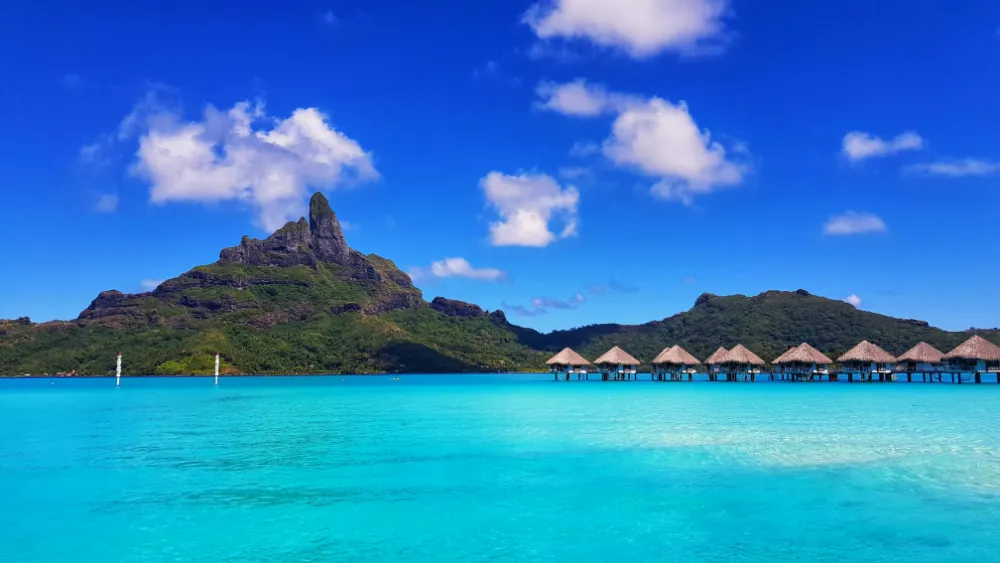
To facilitate more precise trip planning, this section delves into the typical conditions and highlights for each month in Bora Bora. While weather patterns can vary year to year, this breakdown provides a valuable guide based on historical averages and reported experiences. Understanding the specific nuances of each month allows travelers to pinpoint the window that best aligns with their individual preferences for weather, crowds, cost, and activities.
Bora Bora Monthly Snapshot
| Month | Avg. High Temp (°F/°C) | Avg. Rainfall (inches/mm or days) | Humidity Level | Crowd Level | Price Indicator | Key Highlights & Considerations |
| Jan | ~86°F / 30°C | High (~9 in / 230mm) | High | Low (Post-Holiday) | $ | Wettest month. Low prices/crowds after NY. Taurua Varua festival (singing). High cyclone risk period. |
| Feb | ~86°F / 30°C | High (~8 in / 200mm) | High | Low | $ | Very rainy & humid. Low prices/crowds. Good for budget focus. High cyclone risk period. |
| Mar | ~86°F / 30°C | Med-High (~6.5 in / 165mm) | High | Low | $ | Rain decreases but still significant. Low prices/crowds. Improving weather trend. High cyclone risk period. |
| Apr | ~84°F / 29°C | Medium (~4 in / 100mm) | Medium | Med-Low | $$ | Shoulder Season starts. Better weather, less rain/humidity. Good value. Excellent diving/snorkeling. |
| May | ~82°F / 28°C | Low (~3.5 in / 90mm) | Low | Medium | $$$ | Dry/High Season starts. Excellent weather. Crowds/prices increase. Great diving/snorkeling. |
| Jun | ~80°F / 27°C | Low (~2.5 in / 65mm) | Low | High | $$$$ | Peak Dry Season. Excellent weather, trade winds possible. High crowds/prices. Good hiking/sailing. |
| Jul | ~79°F / 26°C | Low (~2 in / 50mm) | Low | High | $$$$ | Peak Dry Season. Excellent weather. Peak crowds. Heiva i Bora Bora festival. Whale watching begins. |
| Aug | ~79°F / 26°C | Low (~2 in / 50mm) | Low | Very High | $$$$ | Peak Dry Season, often busiest month. Excellent weather. Highest crowds/prices. Whale watching peak begins. Good hiking. |
| Sep | ~80°F / 27°C | Low (~2.5 in / 65mm) | Low | High | $$$$ | Dry Season continues. Excellent weather, calmer winds possible. Crowds may ease slightly. Peak whale watching. |
| Oct | ~81°F / 27°C | Low-Med (~3.5 in / 90mm) | Low-Med | Medium | $$$ | End of Dry Season. Good weather, rain increases late month. Crowds lessen. Excellent diving/snorkeling. End whale watching. |
| Nov | ~82°F / 28°C | Medium (~5.5 in / 140mm) | Medium | Med-Low | $$ | Shoulder Season. More rain/humidity, still sunny periods. Good value. Excellent diving/snorkeling. Hawaiki Nui Va’a race. |
| Dec | ~84°F / 29°C | High (~8.5 in / 215mm) | High | Low (early) / High (late) | $ (early) / $$$$ (late) | Wet Season starts. Rainy & humid. Low crowds/prices early, peak for Holidays. Lush scenery. Considered “worst” by some. |
Note: Temperature and rainfall figures are approximate averages synthesized from various sources and can vary. Crowd and Price Indicators are relative ($=Lowest, $$$$=Highest).
January
The year begins in the heart of the wet season. January typically sees the highest rainfall totals for the year, coupled with high humidity and warm temperatures around 30°C (86°F). While the holiday crowds depart early in the month, the remainder of January experiences low season visitor numbers, making it potentially the cheapest time for accommodations and flights. The Taurua Varua festival, focused on traditional singing, may occur during this time. It’s a viable option for serious budget travelers who are prepared for significant rain disruptions and prioritize savings over guaranteed sunshine. This month also falls within the peak risk period for tropical cyclones.
February
Conditions remain similar to January, with high rainfall, persistent humidity, and warm temperatures. February continues the low season trend with minimal crowds and attractive pricing for budget-conscious visitors. Flexibility is key, as outdoor plans are susceptible to weather changes. The risk of tropical cyclones persists.
March
As the wet season begins to wane, March typically sees a decrease in rainfall compared to January and February, although precipitation remains significant, and humidity stays high. It remains firmly in the low season regarding tourist numbers and pricing. Some consider March a favorable low-season option due to the improving weather trend while still benefiting from lower costs. The potential for cyclones continues into March.
April
April marks the transition into the first shoulder season, bringing a noticeable improvement in weather. Rainfall lessens considerably, humidity drops, and sunny days become more frequent. Crowd levels remain relatively low before the peak season surge, offering a more tranquil experience than the summer months. Prices are typically moderate, representing good value compared to the upcoming high season. April is frequently cited as an excellent month for diving and snorkeling, as the calmer waters before the stronger trade winds set in contribute to exceptional underwater visibility. The cyclone risk period effectively ends.
May
The official start of the dry and high season arrives in May. Visitors can expect excellent weather conditions: predominantly sunny skies, low humidity, and comfortable warm temperatures. Tourist numbers increase significantly, though May might be slightly less crowded than the absolute peak months of July and August. Consequently, prices for flights and accommodations rise towards peak levels. The calm, clear waters make it an ideal time for all water sports, including diving and snorkeling. The Tahiti Pearl Regatta, a notable sailing event, may also take place in May. It’s often highlighted as one of the best months to visit Bora Bora.
June
June sits firmly within the peak dry season, offering consistently superb weather. Expect sunny days, low humidity, and pleasant temperatures, with the possibility of refreshing trade winds picking up. High season crowds are well-established, and prices reflect the peak demand. The conditions are perfect for sailing and kiteboarding, thanks to the breezes, as well as for hiking the island’s trails in comfortable, non-humid conditions. Diving and snorkeling remain excellent.
July
July represents the height of the dry season and is often one of the busiest months. Weather remains excellent, characterized by sunshine and low humidity, though trade winds can be more persistent. Tourist crowds reach their peak, driven partly by Northern Hemisphere summer holidays. Prices are at their highest levels. The main draw in July, besides the weather, is the Heiva i Bora Bora, a vibrant, month-long festival celebrating Polynesian culture through traditional dance, music, singing, crafts, and sporting events. The humpback whale watching season also typically begins in July. Hiking conditions remain ideal. Attending Heiva requires planning for peak season costs and crowds.
August
August continues the peak dry season conditions and is frequently the most crowded month of the year, largely due to European holiday schedules. Expect excellent weather similar to July, with abundant sunshine and low humidity. Visitor numbers and prices remain at their absolute peak; booking accommodations and popular tours far in advance is crucial. The humpback whale migration continues, with sightings becoming more frequent. Hiking conditions are still optimal. The Taurua Varua festival, celebrating the local harvest, might also occur in August.
September
While still firmly in the dry season, September often sees a slight decrease in crowds compared to July and August as Northern Hemisphere families return home. The weather remains excellent, with plentiful sunshine and low humidity; some reports suggest the trade winds may begin to settle slightly compared to mid-summer. Prices generally remain high, though there might be slightly more availability or potential for minor dips compared to August. September falls within the peak period for humpback whale watching. Diving and snorkeling conditions continue to be favorable with good visibility. Many consider September an optimal month, offering superb weather with potentially fewer crowds than the absolute peak.
October
October marks the end of the traditional dry season. The weather is still predominantly good, especially early in the month, but the chances of rain showers and increased humidity rise as November approaches. Crowd levels continue to decrease from the summer peak. Prices may begin to transition towards shoulder season rates, offering better value than preceding months. Underwater visibility for diving and snorkeling remains excellent, making it a popular time for these activities. The humpback whale watching season typically concludes towards the end of October. Local school holidays during this month might mean more local families enjoying the beaches.
November
November ushers in the second shoulder season, acting as a transition towards the wet season. Visitors should expect a mix of weather, including sunny periods interspersed with increased rain showers and higher humidity compared to the dry season. Tourist numbers are significantly lower than in the high season, and prices are more moderate, offering good value. November is another excellent month for diving and snorkeling, benefiting from calm seas and clear waters before the heavier rains begin. A major highlight is the Hawaiki Nui Va’a, an exciting and culturally significant outrigger canoe race that draws participants and spectators from across the Pacific. This month also marks the beginning of the potential cyclone risk period.
December
December signals the start of the wet season proper. Rainfall increases significantly, and humidity levels are high. Early December often sees low crowd levels and potentially lower prices. However, this changes dramatically in the latter half of the month as the festive holiday season approaches, bringing a surge in visitors and peak pricing. Some sources consider December one of the less ideal times to visit due to the combination of potentially disruptive rain and, during the holidays, high costs and crowds. On the positive side, the island landscapes are particularly lush and green. The cyclone risk period continues.
Mapping specific events and activities onto this monthly breakdown reveals important planning considerations. Attending the Heiva festival necessitates accepting July’s peak season conditions. Targeting peak whale watching (August-October) overlaps with both high season (August/September) and the transition to shoulder season (October), offering a choice between guaranteed good weather with crowds/cost or slightly more weather risk with potentially better value. The Hawaiki Nui Va’a race provides a unique cultural draw during the value-oriented November shoulder season. This detailed monthly view allows travelers to move beyond broad seasonal labels and make highly personalized decisions based on the specific conditions and opportunities present during their potential travel window.
Best Time to Visit Bora Bora Based on Your Priorities
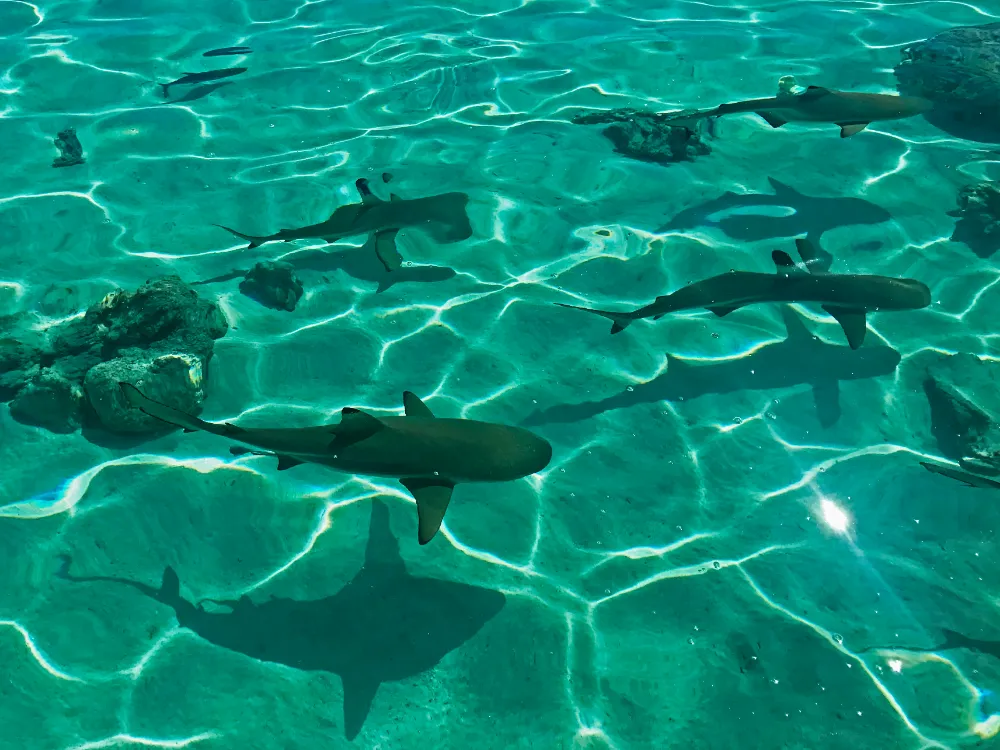
Recognizing that the definition of the “best” time to visit Bora Bora is inherently subjective, this section aligns different travel priorities with the most suitable periods, drawing on the detailed seasonal and monthly analysis.
For Sun Worshippers & Ideal Weather Seekers
Travelers whose primary goal is to maximize sunshine, enjoy clear blue skies, and experience the lowest humidity should target the core of the dry season, from May to October. This period offers the highest probability of uninterrupted sunny days, perfect for beach relaxation, photography, and enjoying the lagoon’s beauty. While June, July, and August represent the absolute peak of these conditions, they also bring the largest crowds. For a similar guarantee of excellent weather with potentially slightly fewer people, May, September, and early October are often excellent choices.
For Budget Travelers
Those seeking the most affordable trip must navigate the trade-offs of the wet season. The lowest prices for accommodations and flights are typically found from January through March, after the New Year holiday rush subsides. However, this period carries the highest risk of rainfall, which can disrupt activities. Travelers choosing this window need flexibility and a tolerance for potential weather impacts. A compelling alternative for value-conscious travelers are the shoulder seasons of April and November. These months offer a compromise, with significantly better weather than the deep wet season, fewer crowds than peak summer, and prices that are considerably lower than high season rates. Booking early can help secure the best deals during these popular value periods. It’s crucial to avoid the late December/early January holiday period when prices spike dramatically. The distinction here is between seeking the absolute lowest cost, which involves accepting significant weather risk (Jan-Mar), versus seeking the best overall value, which involves moderate cost and lower weather risk (Apr/Nov).
For Avoiding Crowds
To experience Bora Bora with the fewest other tourists, the low season from January through March is the prime choice, offering a quiet, intimate atmosphere. The shoulder seasons of April and November also provide a less crowded experience compared to the summer months, striking a good balance between tranquility and favorable conditions. Conversely, those seeking solitude should avoid the peak months of June, July, and August, as well as the busy festive season around late December and early January.
For Diving & Snorkeling Enthusiasts
Optimal conditions for exploring Bora Bora’s underwater world are typically found during April, May, June, October, and November. These months, particularly the shoulder periods (April/November) and the early dry season (May/June), often feature the calmest seas and minimal wind, leading to the best underwater visibility. While the water remains warm year-round, these specific windows maximize the chances of clear views for spotting the rich marine life, including sharks, manta rays, and colorful reef fish.
For Whale Watching
The opportunity to witness migrating humpback whales occurs between July and November, with the peak season generally considered August through October. These majestic creatures travel from Antarctic waters to the warmer climes of French Polynesia during this time to mate and give birth. While dedicated whale watching tours operate from Bora Bora, it’s worth noting that regulations regarding swimming with whales differ from nearby islands like Mo’orea. Travelers can choose between viewing during the high season (August/September) with excellent weather but potentially more tour boats, or during the shoulder season (October/November) with fewer crowds but a slightly higher chance of rain.
For Cultural Experiences (Festivals)
To immerse in vibrant Polynesian culture through major festivals, timing is key. July is dominated by the Heiva i Bora Bora, a month-long extravaganza of traditional performance arts and sports. November features the Hawaiki Nui Va’a, a thrilling and culturally significant outrigger canoe race. Smaller events like the Taurua Varua (focused on singing in January or harvest celebration potentially in August) also occur. Planning around these specific events requires aligning travel with either high season (July) or shoulder season (November) conditions and associated costs/crowds.
For Hiking Adventures
The most comfortable conditions for hiking Bora Bora’s trails, potentially exploring the slopes of Mount Pahia (summiting Mount Otemanu is generally not feasible), are found during the core dry season months of June, July, and August. Lower humidity levels and cooling trade breezes make physical exertion more pleasant, and trails are less likely to be muddy or slippery compared to the wet season. Engaging a local guide is often recommended for safety and insights into the area.
For Romantic Getaways/Honeymoons
Couples seeking a romantic escape often find the shoulder seasons – April, May, September, October, and November – offer the ideal blend of factors. These periods combine generally beautiful weather with fewer crowds than peak summer, fostering a more intimate atmosphere. Prices are also typically more favorable than during the absolute peak. Specific months like May and September are frequently highlighted as particularly appealing. While the guaranteed sunshine of June through August is attractive, the associated high visitor numbers and premium pricing might detract from the sense of seclusion for some couples. The low season offers privacy but carries significant weather risk. Avoiding major holiday periods is advisable for those prioritizing tranquility. The shoulder seasons thus represent a compelling balance for many couples celebrating special occasions.
Times to Potentially Avoid (Depending on Priorities)
While the allure of Bora Bora is strong year-round and there may be “no truly bad time” to visit, certain periods present notable drawbacks that might make them unsuitable depending on a traveler’s specific priorities and expectations.
Peak Rainy Season (Especially January)
For visitors whose primary motivation is guaranteed sunshine and uninterrupted beach time or outdoor activities, the height of the wet season poses the greatest challenge. January, in particular, consistently records the highest rainfall averages, significantly increasing the likelihood of encountering prolonged showers or storms that can disrupt plans. December and February also see substantial rainfall. If sunny skies are paramount, avoiding these core wet season months is advisable.
Peak Crowds & Prices (July, August, Late December/Early January)
Travelers seeking a peaceful escape or adhering to a strict budget should be wary of the absolute peak tourist periods. July and August, coinciding with Northern Hemisphere summer holidays, experience the highest influx of visitors, leading to crowded resorts, beaches, and tours. Similarly, the festive season covering Christmas and New Year’s sees a sharp spike in both crowds and prices. During these times, accommodation availability can be scarce, and booking far in advance is essential.
Hurricane/Cyclone Season (November – April, Peak Risk Jan-Mar)
The official South Pacific cyclone season runs from November through April, with the period from January to March generally considered to carry the highest statistical risk. While direct hits on Bora Bora are historically uncommon, the potential for tropical storms or cyclones exists. Even nearby systems can bring extended periods of strong winds, heavy rain, and rough seas, significantly impacting a vacation. Travelers visiting during these months should be aware of this possibility and understand that it overlaps with the most budget-friendly time, presenting an inherent risk-versus-reward calculation. Purchasing comprehensive travel insurance is particularly prudent during this timeframe.
Ultimately, the “worst” time to visit is subjective. A budget traveler might happily accept the rain risk in January for lower prices, while a sun-seeker would find that unacceptable. A visitor prioritizing solitude would avoid July and August at all costs. Framing avoidance around specific negative factors—rain, crowds, cost, storm potential—allows travelers to make informed decisions based on their own tolerance levels and priorities.
Practical Planning Tips & Final Recommendations
Successfully planning a trip to Bora Bora involves more than just choosing the right time; practical considerations can significantly enhance the experience.
Booking Advice
- High Season (May-Oct) & Holidays: Due to extreme popularity, booking flights and, most critically, accommodations well in advance is essential. Aim for several months, or even up to a year ahead, especially for sought-after overwater bungalows or specific resorts.
- Shoulder/Low Season: While there is generally more flexibility, booking popular resorts or specific tours early is still recommended to secure preferred options and potentially access better deals. Exploring package deals that bundle flights and accommodations can sometimes offer savings.
Packing Essentials by Season
Packing appropriately ensures comfort regardless of the season.
- Dry Season (May-Oct): Focus on lightweight, breathable clothing (cottons, linens), multiple swimsuits, effective sun protection (high SPF, broad-spectrum, reef-safe sunscreen, wide-brimmed hat, quality sunglasses), a light cover-up or wrap for evenings or breezy boat trips, and comfortable footwear like sandals or water shoes.
- Wet/Shoulder Season (Nov-Apr): Include all items for the dry season, but add essentials for rain: a lightweight, packable rain jacket or sturdy travel umbrella, potentially stronger insect repellent (especially for jungle hikes or evenings), and clothing made from quick-drying fabrics. A traditional Polynesian pareo is both a cultural souvenir and a practical item for beach or poolside wear.
- General: An underwater camera is highly recommended for capturing lagoon memories. A reusable water bottle helps stay hydrated and reduces plastic waste. Pack any necessary personal medications.
Consider Travel Insurance
Comprehensive travel insurance is advisable for any international trip, but it holds particular importance when traveling to a remote destination like Bora Bora. It provides coverage for unforeseen events like medical emergencies, trip cancellations or interruptions, and lost luggage. This is especially crucial during the wet/cyclone season (November-April) due to the increased potential for weather-related disruptions.
Embrace Flexibility (Especially in Wet/Shoulder Seasons)
Particularly when traveling outside the core dry season, maintaining a flexible attitude is beneficial. Rain showers can occur; often, they pass quickly, allowing activities to resume. Have alternative plans in mind for rainy periods, such as indulging in a spa treatment, joining a local cooking or craft class, or simply relaxing and enjoying the dramatic views from your accommodation.
Frequently Asked Questions (FAQs)
Q: When is the absolute cheapest time to go to Bora Bora?
A: The period offering the lowest prices generally falls within the low/wet season, specifically January, February, and March, after the New Year holiday demand has subsided. This affordability comes with the highest probability of rainfall during the year.
Q: How bad is the rain during the wet season?
A: Rainfall during the wet season (November-April) is variable. Travelers should expect frequent showers. These can range from brief, heavy downpours followed by sunshine to longer periods of overcast skies and steady rain. Humidity is also noticeably higher. January typically experiences the most rainfall. While rain can impact outdoor activities, it also contributes to the island’s lush beauty and can create spectacular rainbows.
Q: Is April/November really a good time to visit?
A: Yes, the shoulder months of April and November are frequently recommended by travel experts and sources. They offer a compelling balance: generally pleasant weather with less rain and humidity than the wet season, significantly fewer crowds compared to the peak summer months, and more affordable pricing than the high season. These months are also considered particularly favorable for diving and snorkeling due to typically calm seas and excellent visibility.
Q: How many days do I need in Bora Bora?
A: The ideal duration is subjective and depends on budget and interests. Many visitors find 4 to 7 days allows for a good mix of relaxation and exploration. Some sources suggest 3-4 days can be sufficient for hitting the highlights, but longer stays enable a deeper immersion in the island’s atmosphere and activities. Remember to factor in the considerable travel time required to reach this remote destination.
Q: Do I need to worry about hurricanes?
A: The official South Pacific cyclone season runs from November to April, with the highest statistical risk typically between January and March. While direct hurricane hits on Bora Bora are historically rare, the possibility exists. Tropical storms in the region, even if they don’t make a direct impact, can bring prolonged periods of strong wind and heavy rain. It is a factor to be aware of, particularly if traveling during these months, and underscores the value of travel insurance.

